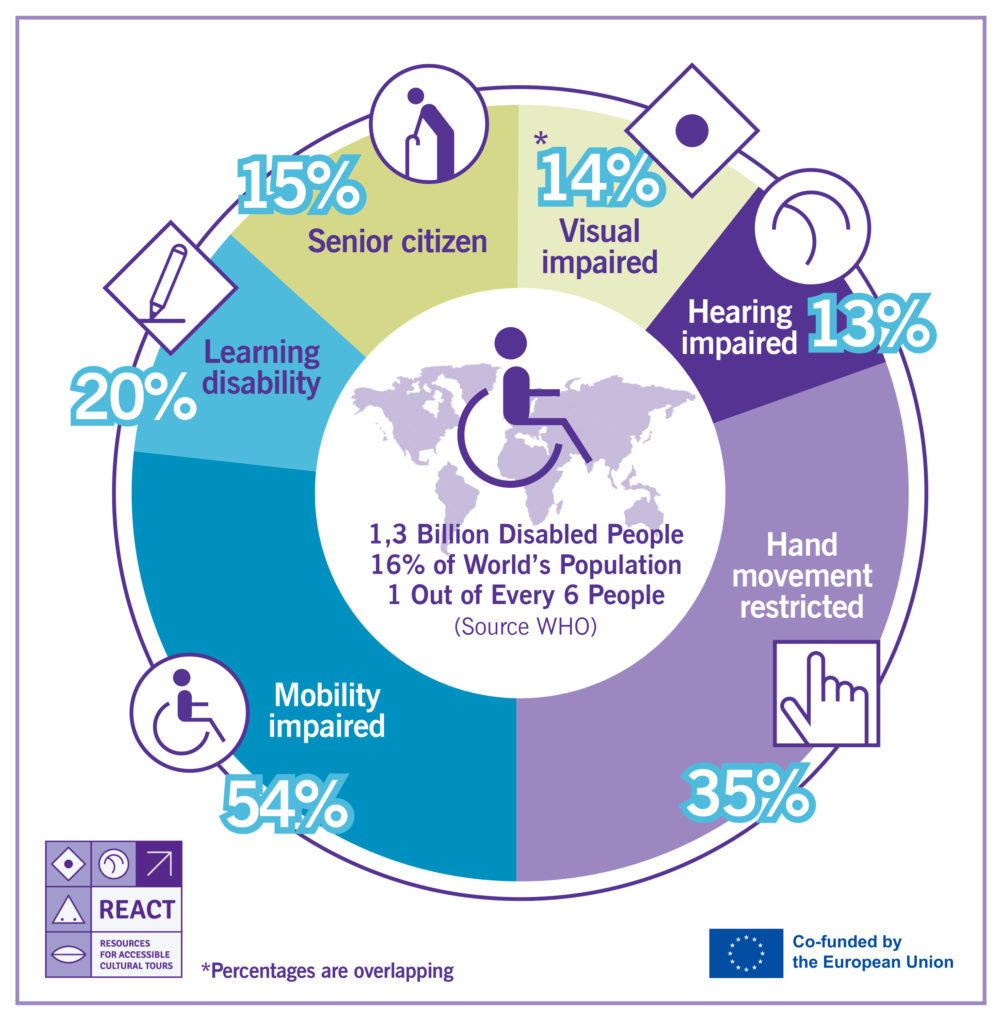Challenges for persons with hearing disability
People with hearing disabilities are a group of people who have their own unique needs in relation to accessing information in the digital sphere. Like people with other disabilities, they face a variety of barriers in this regard, including within their exposure to the arts and cultural heritage. To ensure that they can access the online content and resources that the museum offers in this way, consideration should be given to:
- augmented subtitling (these subtitles provide additional information, for example, on who is speaking the words if that person is not visible or what important sounds are heard in the background), which facilitates access to audio-video content and live broadcasts for deaf and hard of hearing people with a good level of language proficiency
- translations into the national sign language, which enable deaf and hard-of-hearing persons to access audio-video content and live broadcasts
- transcriptions that enable people with hearing disabilities to access spoken content, such as podcasts, webinars or videos, an alternative to audio content is the provision of alternative text for audio recordings
- alternative forms of contact, such as conversation through a sign language interpreter, contact via SMS, chat or email
Challenges for persons with visual disability
If we talk about the accessibility of a museum for visually impaired people, we face a substantively difficult task. The main reason is that the visual message in the case of a museum is the primary form of communication between the creator and the audience. To enable a visually impaired person to encounter art and cultural heritage, it is necessary to enable them to use their other senses. So, what are the barriers visually impaired people face in terms of museums accessibility, mainly digital accessibility?
A visit to a museum starts most of the time online, something that is often forgotten by decision-makers and staff in cultural institutions. Nowadays, most visitors will check the offer on a website before going to a gallery or museum. Same steps are taken by visually impaired visitors who would like to check the offered facilities. Unfortunately, they often face a barrier in the accessibility of the website, which is either completely inaccessible to them or poorly readable with speech synthesisers. Despite the guidelines on the steps that need to be taken to make a website accessible to people with disabilities, as described in WCAG 2.1, many institutions do not follow them. The result of this situation is that such a cultural institution loses potential visitors. Without receiving the requested information online, people with visual impairments may suspect poor accessibility of such an institution and simply do not want to visit it.
What information on the museum’s website would visually impaired visitors expect?
- about public transport to help them get to the site
- description of the route from the nearest bus stop to the institution
- location of museum exhibitions, cloakrooms, toilets, box office, café
- details of facilities, e.g. audio description, typhlography, availability of assistants
- audio description of the museum building with spatial layout of the rooms
Challenges for persons with physical disability
Another group of people facing barriers to digital accessibility in museums and beyond are those with mobility impairments. Some of them navigate websites and mobile apps using only the keyboard, eye movements or by voice. Difficulties they face include:
- a lack of web standards for websites and OS-specific solutions for mobile applications
- a lack of “skip links” to skip the entire navigation section
- a lack of visible labels for buttons and fields – the person navigating by voice needs to see them in order to know how to activate a particular field
Challenges for persons with intellectual and psychological/social disability
Specialists emphasise that it is most difficult to prepare for working with people with intellectual disabilities because of the wide range of types of dysfunction and the diversity of reactions of such people.
When talking about the challenges faced by a person with intellectual and psychological/social disabilities in overcoming barriers to digital accessibility, it is worth considering the spectrum of difficulties they face. Some of which are listed below:
- perceiving differences and connections between what they see, hear and say
- seeing connections between events, experiences, people, things
- discovering meanings and understanding hidden meanings – allusions, metaphors, ambiguities
- making associations between old and new insights
- assimilating facts from various sources (and thus also from digital ones)
- focusing on one thought, action
- understanding abstract concepts
- writing, reading, counting

